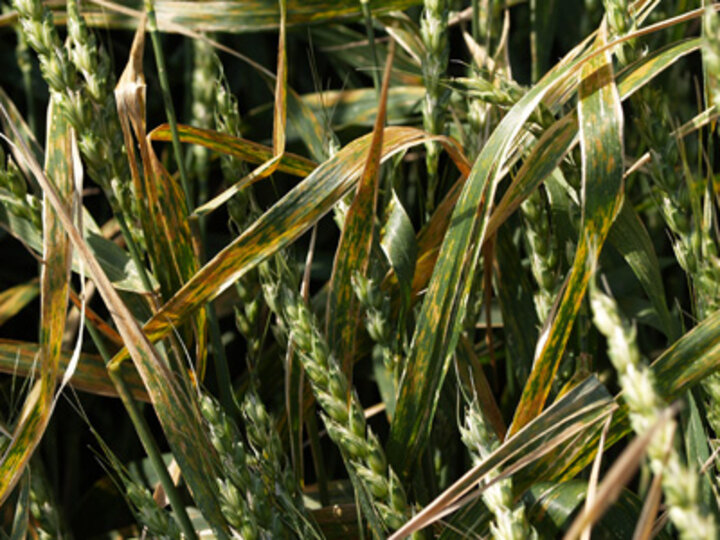June 6, 2008

|
| Figure 4. Leaf streaking caused by black chaff. |
On June 6, Fusarium head blight (Figure 1) was found in a grower's field in Lancaster County and in research plots at the Agricultural Research and Development Center near Mead in Saunders County. Incidence (percentage of infected heads) was approximately 2% and severity (percentage of spikelets infected on a head) ranged from trace to more than 50% (Figure 2).
Fusarium head blight can be controlled by applying a fungicide at early flowering. Once symptoms appear in a field, it is too late to apply a fungicide to suppress the disease. Fungicides registered for suppression of Fusarium head blight include Proline, Folicur, Caramba, and Tilt.
Also found in both locations was black chaff, a bacterial disease favored by wet weather. Black chaff darkens glumes (Figure 3) and also causes streaks on leaves (Figure 4). Black chaff is controlled by planting certified, pathogen-free seed.
Stephen Wegulo
Extension Plant Pathologist
John Hernandez Nopsa
Graduate Student



